#arctic troodontid
Explore tagged Tumblr posts
Text

Prehistoric Planet-inspired artwork. Based on the Arctic Troodontid.
11 notes
·
View notes
Photo

A mainstay of the Alaskan wilderness, Troodontids are a special group of dinosaurs. While they don’t appear to be much different than their raptor cousins, these theropods were known for having big brains. While it’s not likely that they were as big as the brains of today’s corvids, troodontids are extremely intelligent when compared to their dinosaurian quarry. Many species have even been known to spread forest fires around, flushing out potential prey animals trying to escape the growing blaze.
14 notes
·
View notes
Photo










Life of our Prehistoric Planet: Arctic troodontid.
22 notes
·
View notes
Text
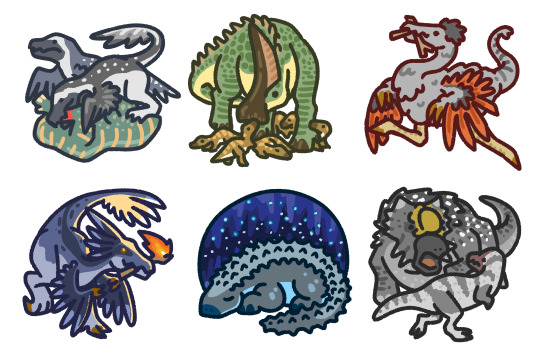
Prehistoric Planet Episode 4 - Ice Worlds
This was my favorite episode so far, what with the goofy bandit Ornithomimus, adorable baby Olorotitans, and the awesome Pachyrhinosaurus/Nanuqsaurus standoff. The real star of the show, however, was the Pyromaniac Troodontid.
#prehistoric planet#prehistoric#paleo#paleo art#dinosaur#dinosaurs#dinosaur art#dromaeosaur#olorotitan#ornithomimus#troodont#troodontid#burn it all down#antarctopelta#pachyrhinosaurus#nanuqsaurus#theropod#ceratopsian#arctic#digital art#funny little guys#my art
355 notes
·
View notes
Photo




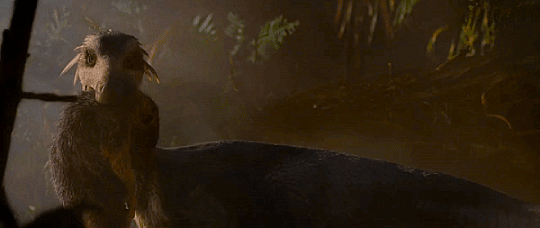
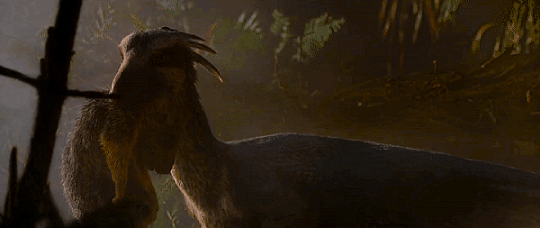
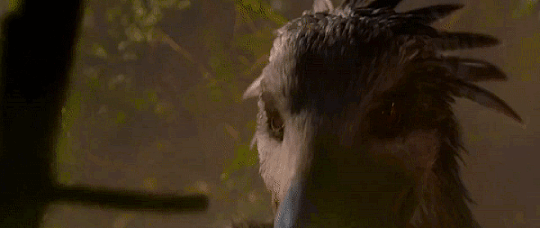

This six-foot-long dinosaur, a troodontid, is one of the smaller members of the theropod group. Its huge eyes give it acute sight, even in this smoky gloom. And for its size, its brain is one of the largest on the planet. It is the most intelligent, adaptable, and successful hunter in the Arctic.
#prehistoric planet#documentaryedit#my edit#troodontids my beloved <3#so much love for one of my fav dinosaurs <3 alexa play standing outside the fire by garth brooks
2K notes
·
View notes
Text
Disney’s Dinosaur Trinity:
(TOH+Amphibia+TGAMM represented by dinosaurs)
The Owl House-
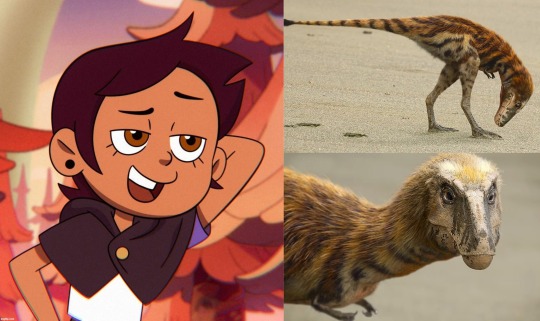
Luz Noceda is a baby Tyrannosaurus Rex (all the kids will be juveniles)

(Camila is also a T-rex.)
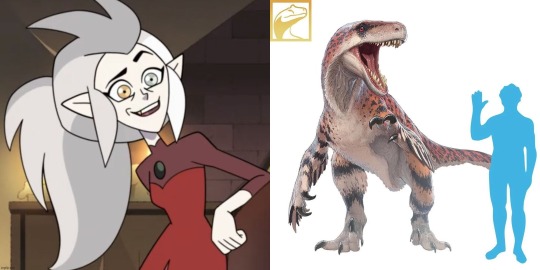
Edalyn Clawthorne is a Utahraptor: The most powerful of all "Raptors”.
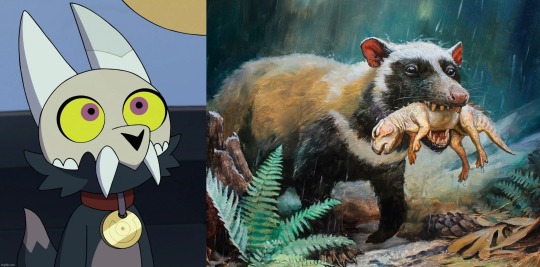
King as Repenomammus: Small but mighty.
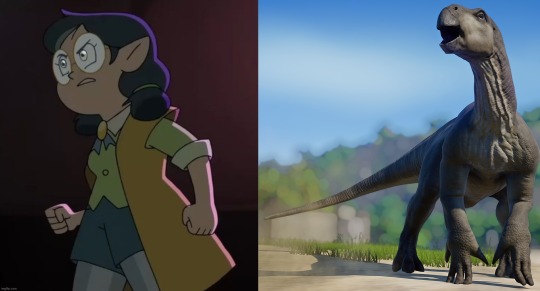
Willow park as iguanodon: Talk dumb you get the thumb.
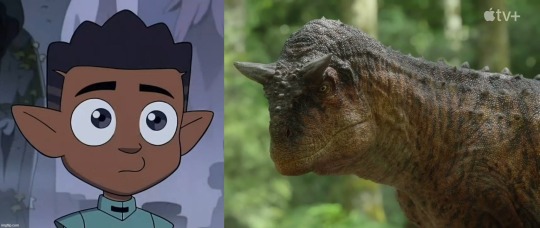
Augustus Porter as Carnotaurus: I'll distract them with my flags.
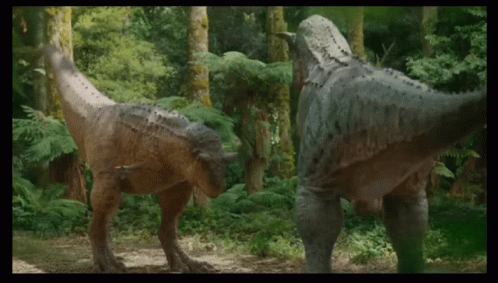
(waves arms aggreissively)

Amity Blight as Nanuqsaurus
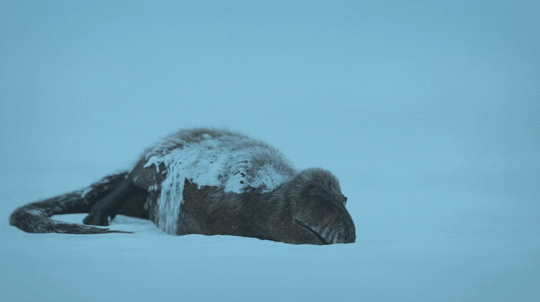
(A snowy mittened tyrant)
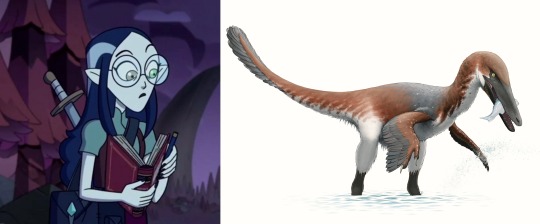
Lilith Clawthorne as Austroraptor
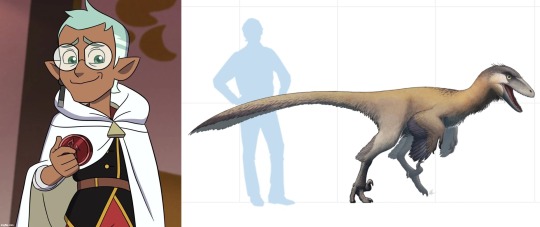
Raine Whispsers is a Latenivenatrix: Not a Dromaeosaur but a Troodontid.
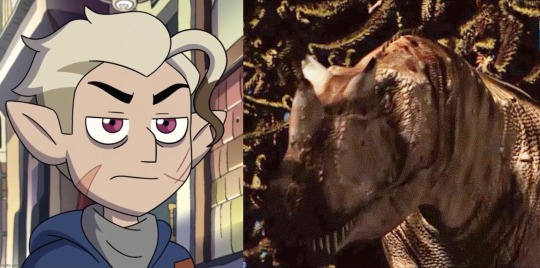
Hunter is a Ceratosaurus: A Jurassic Dinosaur grimwalkered into the Cretaceous.
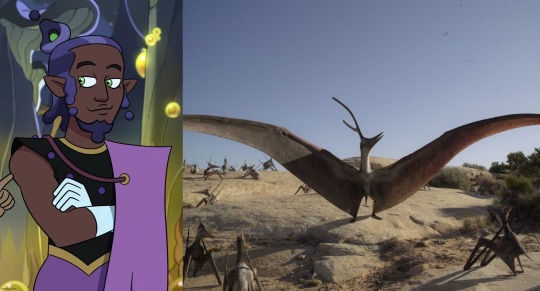
Darius is a Barbaridactylus

Eberwolf is an Alcione
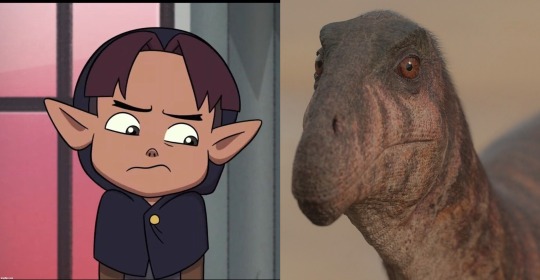
Mattholumule is a Masiakasaurus
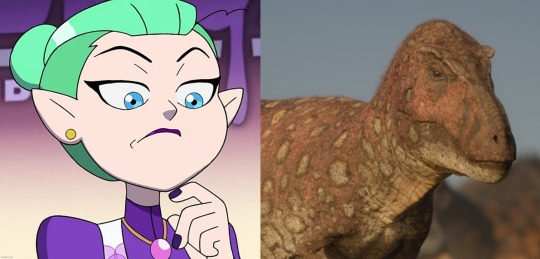
Odalia Blight is a Tarbosaurus
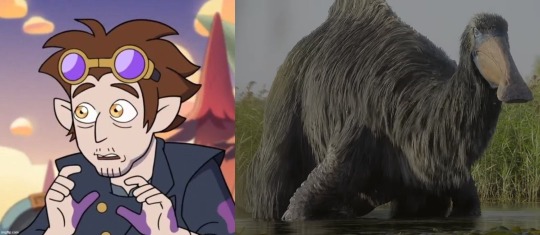
Alador Blight is a Deinocheirus

Vee Noceda is a Spinosaurus: Supposed to be extinct, but not anymore.

Emperor Belos is Meraxes Gigas: An ancient apex predator replaced by the Tyrannosaurs and Abelisauroids.
Amphibia-
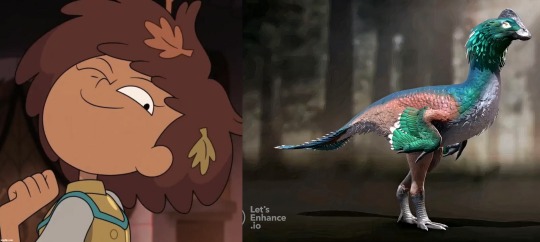
Anne Savisa Boonchuy is an Anzu.
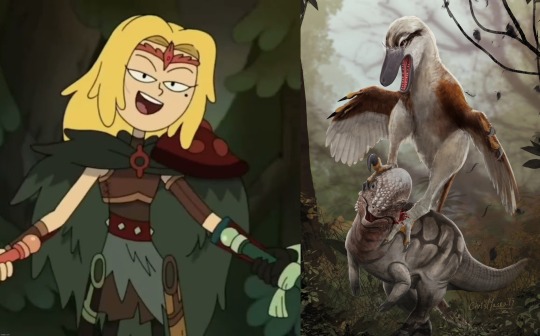
Sasha Waybright is a Dakotaraptor...

…or Qianzhousaurus.
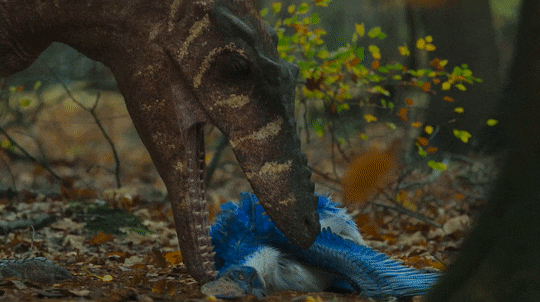
(Both prey on Oviraptorids, luckily Anzu is big enough to fight back: Don’t worry they’re still friends here.)

Marcy Regina Wu is an Arctic Troodontid.
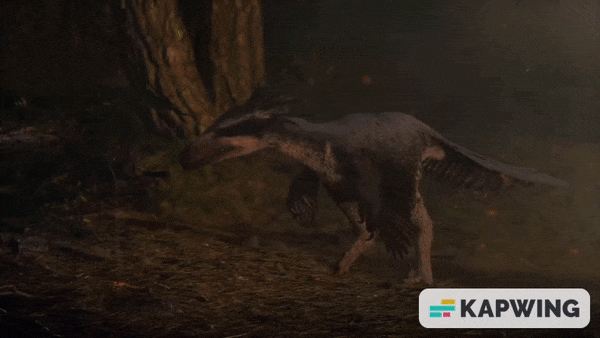
(She may be small, but she’s craftiest hunter of her time.)
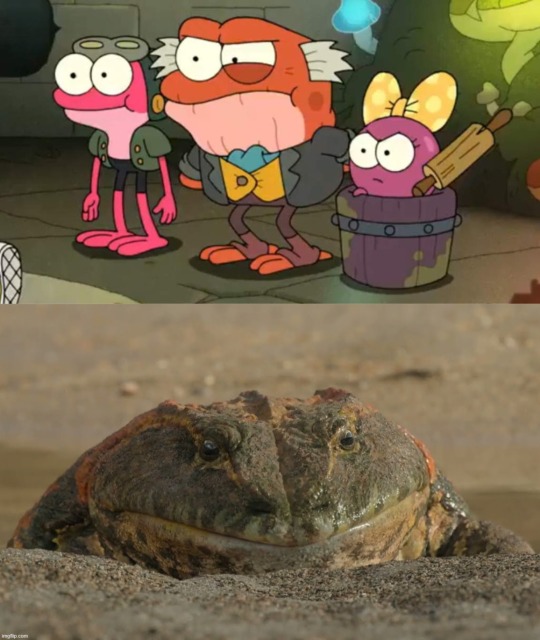
The Plantar Family and by extension all Frogs are Beelzebufo. (So basically nothing’s changed)

Captain Grime is a Saurosuchus: Not a dinosaur, but giant “Land crocodile” that rivaled dinosaurs.

General Yunan is a Megaraptor: Not actually a “raptor,” more related to Tyrannosaurs.

Lady Olivia is a Olorotitan.
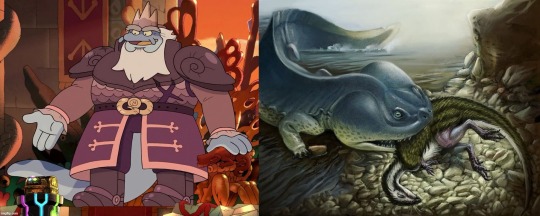
King Andrias is a Koolasuchus...

Or a Mastodonsaurus.(which is even larger/scarier)
The Ghost and Molly Mcgee-

Molly Mcgee is a Mononykus.

(A little bug chaser in a big world)
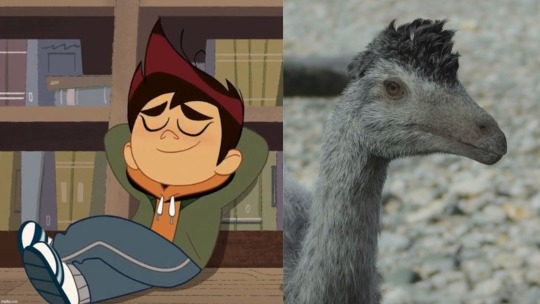
Darryl Mcgee is an Ornithomimus.
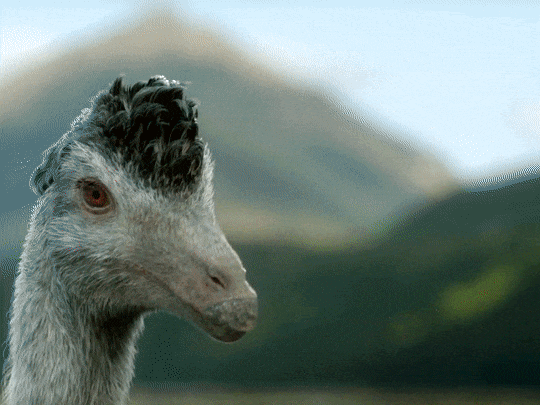
(A stone cold criminal)

Libby Stein-Torres is Liaoningosaurus: The tiny armored dinosaur that wants to be a turtle.
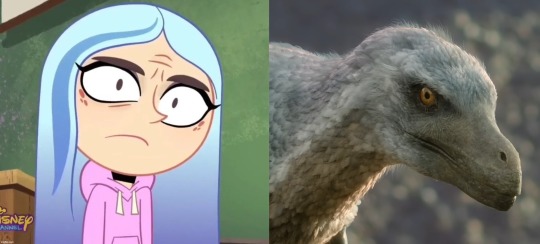
Andrea Davenport is a Velociraptor.
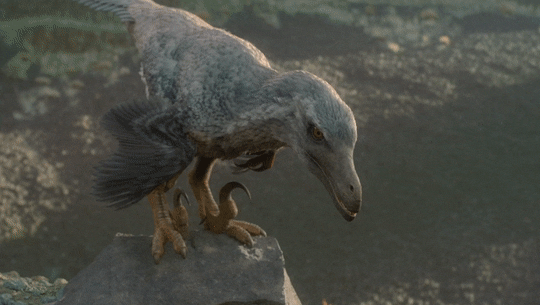
(Immensely popular and seemingly cold, but warm and soft deep down)
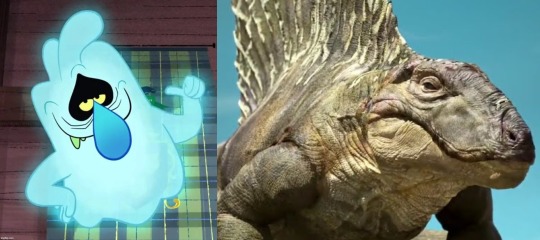
Scratch is the ghost of a Dimetrodon: Long before dinosaurs even came to be.
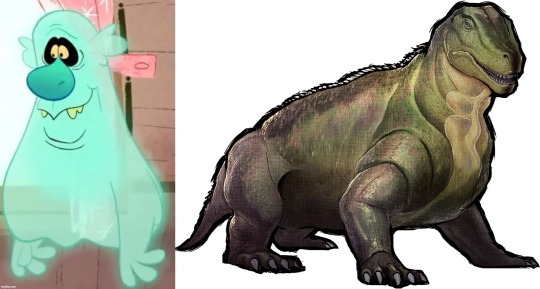
Geoff is Moschops: Basically the same but nicer.
Last but not least-
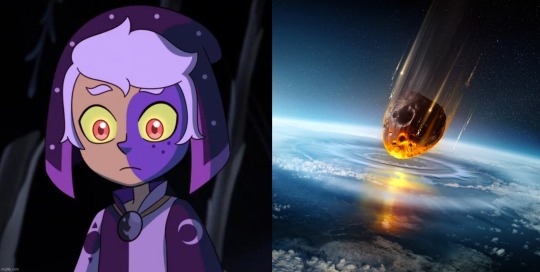
The Collector is the meteor. (Also applies to the core)
#the owl house#owl house#toh#amphibia#tgamm#the ghost and molly mcgee#dinosaurs#feathered dinosaurs#pterosaur#paleontology#prehistoric planet#jurassic world#jurassic park#the owl house au#amphibia au#tgamm au#disney#disney channel#luz#luz noceda#edalyn clawthorne#king clawthorne#willow park#augustus porter#amity blight#lumity#anne boonchuy#marcy wu#sasha waybright#molly mcgee
505 notes
·
View notes
Note
hello! i heard you like dinosaurs. i was wondering if you've heard of the Dinosauria series from Dead Sound on Youtube. the last episode of the series just dropped today(? yesterday, whatever.) and it wrecked me emotionally. i believe one of the episodes does feature an (arctic) troodon, too! if thats any extra incentive to watch this. anyway this is a recommendation to watch it if you haven't, stay safe and well wishes!
Hi! Yes, I do! I've loved them since I was a little girl dreaming of being a paleontologist at the American Museum of Natural History!
I've actually never heard of that so I'll have to check it out when I've got some time in between my grant project at the library and the other creative projects I've got going on at home! (And I am verrrry pleased to hear there's an Arctic troodontid. I LOVE those little smarties. ♡)
5 notes
·
View notes
Photo

On a world where the K/Pg didn't happen as it does on our timeline, the major changes in climate and environment during the Cenozoic offered plenty of opportunity for many groups of theropods to take new niches, especially in terms of large predatory niches as during the late Paleogene and early Neogene with the cooling of Earth groups of mega-carnivores like tyrannosaurs perished, leaving a place for new carnivores to take the role. While Eurasia was conquered by the still prevalent abelisaurs and a new and unusual radiation of carnivorous pachicephalosaurs, in America an experiment of evolutionary radiation would begin which will cause the emergence of diverse predatory clades, from caenagnathids, troodontids and Dromaeosaurids, developing varied large forms, however, only one clade would win in the long term is the last one mentioned. Over the course of millions of years since the beginning of the neogene, Dromaeosaurs would begin a trend of body growth, already surpassing the size of the biggest species, at the same time of a change in morphology including the reduction of arms, the curved claws of their feet and the modification of the head and neck, thus giving rise to an entirely new clade of large theropods, the Teratoraptors, appearing around 20 to 15 million years ago they became one of the most prolific groups of macro-predators during the isolation of North America being formidable prairie hunters and tundra, even being able to colonize Eurasia in great part of the neogene and compete with other predatory clades on the old world, although they became predominant as major carnivores until the Pleistocene, being quite prevalent in the polar territories for its ability to withstand cold environments thanks to its large coat. This lineage is made up of two notable clades, the first ones are the Auxovenatora, which could be considered as the most basal, appear during the Oligocene, being mainly cursorial predators (although large species tend to have a much heavier shape), adapted to the meadows and of social habits able to congregate to hunt in packs. These still present some vestiges of their Dromaeosaurids predecessors, including a fluke, a half-developed curved claw and primaries on their arms. These are quite spread across the Arctic Circle, from Europe, crossing Asia and reaching their continent of North America origin, with some populations that colonized South America when the Isthmus bridge was formed. The species sample is one of the largest hunt pack predators with 9 meters long, living in the pampas of South America, they are pretty much specialized in large animals such as sauropods and hadrosaurs. The second group is more specialized for heavy prey with strong jaws, giving a convergence to the tyrannosaurs and which give the name to the clade itself, the Teratoraptora, the new crushing jaw theropods, they are more scattered around East Asia, with some species in North America, they thrive as hunters of heavy animals in tropical and temperate areas, being not so common in polar areas. They are characterized by having a robust head with long teeth, a short neck, smaller arms to the point of losing the primary characteristics, and with a more generic foot and similar to other theropods, with the curved claw completely absent. Unlike its more base relatives, most of these teratoraptorans are solitary in behavior, more dependent on ambush strategies with direct heavy fighting. The species shown is a medium size predator inhabitant of the south east regions of Asia, characterized by its bare head, pale red with blue spots, contrasting with a brown plumage, also males are able to grow some small spiky keratinous structures around the snout.
23 notes
·
View notes
Text

LMAOOOOOOO they do!!!!
The adult T. rex just has a subtle peach fuzz. It's actually still hotly debated whether T. rex had feathers, since we've found scaly skin impressions where we would expect to see feathers if it DID have feathers. This show DOES show the juvenile T. rexes as fully feathered!!


PLUS another arctic tyrannosaurid, Nanuqsaurus, that was heavily feathered.

ANNDDDDDDD probably the best dromaeosaurids and troodontids ever animated. Watch this behind the scenes clip!
youtube


In general, these are the best dinosaurs we’ve seen in media by far. A lot even include details from pretty recent discoveries. There’s a lot of speculation, but it’s amazing just how much we can still infer even with so little.
I’m still screaming at the scene in the Freshwater episode of Prehistoric Planet of the T rexes porking and they put a fuckin modesty fern in the foreground. that was so funny why did they do all that 💀
9K notes
·
View notes
Photo

Prince Creek
Watched by a foraging troodontid, a herd of Arctic hadrosaurs walk along a moonlit beach in Alaska, 69 mya. Inspired by trackways left in volcanic ash at Prince Creek. The species depicted have unclear status at this moment in time, so let's call them Troodon sp. and Ugrunaaluk kuukpikensis/Edmontosaurus regalis.
#prince creek formation#prince creek#alaska#maastrichtian#cretaceous#mesozoic#dinosaurs#theropod#troodon#hadrosaur#ugrunaaluk#edmontosaurus#arctic dinosaurs#extinct#gallery
88 notes
·
View notes
Text
Ultra’s Prehistoric Planet Reviews- Episode 4: Ice Worlds
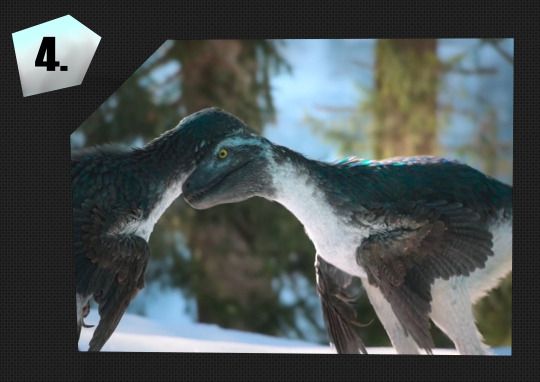
Welcome back once again to the Prehistoric Planet! So far, we’ve covered mosasaur spas, femboy pterosaurs, and a Deinocheirus taking a crap. What could today’s adventure bring to the table? I’m glad you asked, metaphorically (Despite you never actually asking me in person). For the 4th episode in the series, we’re visiting some of the coldest, higher up places on the Prehistoric Planet, home to volcanos, snow-covered plains and forests, and mountains galore, along with the dinosaurs that live there. Get bundled up now (But skip the whole waiting til’ you get older part), because we’re trekking through the Ice Worlds.
Now, this particular segment might be a bit short, but there are a few things I wanna mention. Aside from a few species not being referred to by their names, this was easily one of the best episodes overall. The showrunner really did a great job with everything, as usual. The list of species used here was also phenomenal; Pacyrhinosaurus, Nanuqsaurus, Dromaeosaurus, Olorotitan, Ornithomimus, even Antarcopelta. This is a mighty fine selection of dinos they got right here.
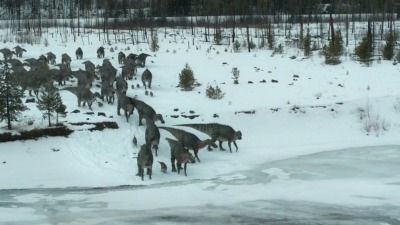
We begin our tour of this overgrown freezer by checking in on a trio of Dromaeosaurus stalking a herd of Edmontosaurus (Which are referred to as “hadrosaurs”). Mind you, a fully-grown adult can kick one of these feathery pests back in time to kick them back into the future, so the best bet is to go after one of the youngsters. To do this, the raptors spook the herd into going over a freezing rapid. While most of the herd manages to cross the fast-flowing river, there are casualties, something that the raptors are more than happy to clean up after.
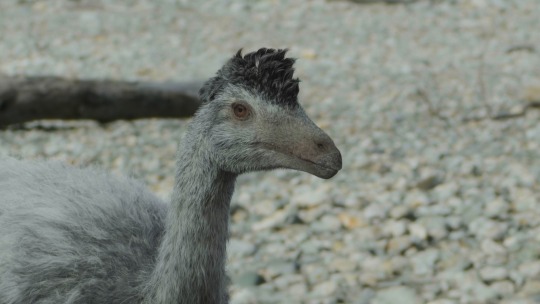
We then cut to a colony of Ornithomimus, setting up their nests for the arriving females. Since this species didn’t appear in any of the promotional material for the show, it’s a welcome surprise to see these guys show up. They’re basically giant, angry swans that hiss at each other every time one of them is caught stealing leaves from their nests for their own. It’s silly, but silly is how we roll ‘round here.

Speaking of nests, it’s time to cut to Russia, where we meet Olorotitan, a massive species of hadrosaur that raise their young in volcanic regions. Like all of the species making their debut here, it’s really nice to see these guys pop up, especially if you’ve heard about them in certain books about dinosaurs like I did when I was younger. Getting back to the segment, the hatchlings are surprisingly alright with being near a volcano. What they’re not alright with are an abundance of pesky mosquitos. The adults, being much larger and having more blood in their bodies, only deal with the bugs as annoying pests. It’s the babies who are in danger of getting drained to death, something that even some of the parent will abandon their babies for if they’re too weak to move. Thankfully, the baby we focus on manages to move past the bloodsucking insects and catches up with it family. A rather wholesome note to end this segment on.

Next, we return to the Arctic, where we partake in a bit of Dinosaur Arson. The main star of this segment is a Troodontid (While Troodon itself is now considered a dubious genus, my guess for this particular species might be Stenonychosaurus). Ya know how secretary birds stick around fires to pick off smaller animals trying to escape the flames? This is basically that, but now in the Cretaceous. The Troodontid even looks like a secretary bird for Pete’s sake! Aside from my jokes about this guy potentially being the Maastrichtian version of the Pyro (Just give him a gas mask and a flamethrower, and you’ll be good to go), this scene was really good.
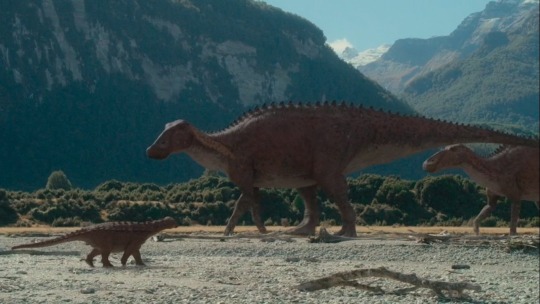
Going from one end of the world and to the other, we meet the tiny Antarctopelta, a southern ankylosaur. The main jist of this segement goes as such; The guy diches his bros to go live in his own territory. That’s a simple plot for the segment, but simple is all you need sometimes. After travelling huge distances, our male eventually finds a cave to sleep in just before the long winter night begins. And, to make things better, he even gets thousands of new roommates in the form of glowworms. They even act like makeshift nightlights while our armored lad sleeps the winter away.
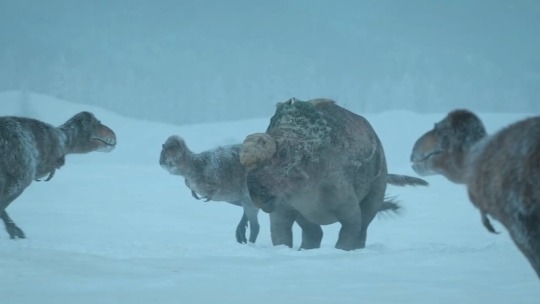
To end this episode off, we return to Alaska one last time to see two ancient rivals partake in their battle; Pachyrhinosaurus vs. Nanuqsaurus. Unlike the reworked version of the Walking with Dinosaurs movie that retooled the Gorgosaurus from the original film as Nanuqsaurus (And also had “Prehistoric Planet” right in the name. Mighty curious coincidence right there), these Nanuqs has a full coat of feathers that help them survive the cold (Even looking just like grey wolves too), while the Pachyrhinosaurus are more like musk oxes. Believe it or not, I was actually rooting for the Nanuqsaurus to make their kill, as I’ve always been of a tyrannosaur guy myself. Along with the Mosasaurus spa, the Mononykus goofing around, and the Quetzalcoatlus mother from the last 3 respective episodes, this is one of my favorite scenes from the show overall, and we just have one more episode left.
We’re nearing the end of our Maastrichtian safari, so join me one last time tomorrow as we enter the Forests of the Prehistoric Planet. And, as a neat way to end off this series, we’ll be looking back on it as l as revisit all 5 of my favorite segments from all 5 episodes. Stay tuned, folks!
11 notes
·
View notes